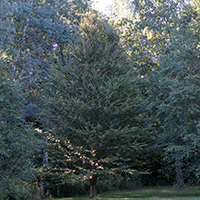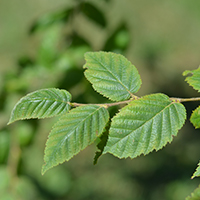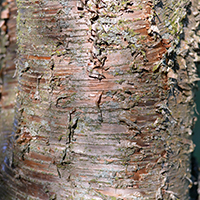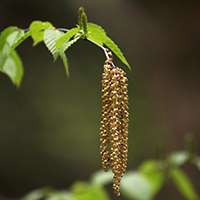What yellow birch looks like
Size and shape
- Slow-growing medium-sized tree.
- Up to 25 metres tall.
Leaves
- Deep yellowish-green oval leaves (8 to 11 centimetres long).
Bark
- Thin, shiny, reddish-brown bark when young.
- Becomes dull yellow with age.
- Darkens to bronze colour when mature.
Flowers
- Slim green and brown “catkins”.
- Form in late summer and stay on the tree all winter, shedding pollen in the spring.
Where yellow birch is found
Yellow birch grows across Southern and Central Ontario and into northern parts of the province.
What you need to know to grow yellow birch
- Moisture: prefers moist soil.
- Shade: moderately shade tolerant.
- Soil: prefers rich soil.
- Caution: fertilize yellow birch trees only when they show signs of poor health, such as discoloured leaves or slowed growth.
Benefits and uses of yellow birch
Wildlife benefits
Yellow birch seeds and stems are a food source for many birds and mammals.
Commercial uses
The wood from yellow birch is used for:
- furniture and veneer
- doors and cabinet making
- plywood
- firewood
Fun facts about yellow birch
- Trees live for about 150 years.
- Although yellow birch does turn yellow in the fall, the tree gets its name from its bark, which is a golden yellow for much of its life.
- Yellow birch is the largest birch native to Ontario.
Updated: November 22, 2023
Published: July 18, 2014



